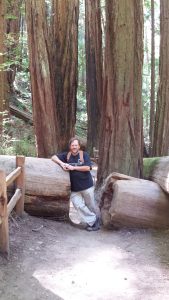Intro course for non-scientists
Increasingly, colleges are offering intro courses on the science of sound. The idea is to introduce non-scientists to acoustics and to science. The course is usually one semester long and requires no prerequisite. The audience is a diverse mix of non-technical majors, from musicians looking to hone their craft to liberal arts majors looking for an interesting science elective.
The course presents instructors with a unique opportunity to reach students who might not otherwise take physics. The challenge is to bring these students a meaningful and positive experience with science that has practical meaning for their lives as non-scientists.
Intended audience
This book is written for high school and college students who do not have much background in science or math. The book deliberately avoids incorporating basic physics topics (like force, energy and pressure) beyond what is absolutely needed for the book. The math is mostly at the 8th grade level- algebra, graph reading, ratio and proportion. There’s no calculus. There’s no trigonometry. The hardest math (logs and roots) is in the sections on decibels and musical intervals. (These sections can be skipped without disrupting the flow of the book).
A musical background is not required to understand this book, but it helps. Musicians have valuable experiences- producing sound, listening carefully to sound and (perhaps) reading music. I’ve brought in musical topics in the main text to help those with a musical background understand the material better.
Goals of the book
The overarching goal of this book is to introduce non-scientists to the basic science of sound. The hope is that readers become more inquisitive, careful and informed listeners to the world around them. Along the way, you might develop an appreciation of the perspectives of science and learn (or relearn) some basic math and/or physics.
What makes this book different
There are already several readily available texts on the physics of sound. Why write another?
- This book is free. It is open copyright (CC-BY). It costs students nothing. Authors and teachers may reproduce or modify the work freely to fit their needs, provided they cite this work. Care has been taken to only include resources that are public domain, CC-BY or created by me. If you find content in this book that you suspect does not meet these criteria, please let me know.
- This book focuses on sound. This book presents sound without relying on connections to the deep, important topics (like force and energy) that underpin the science of sound. The basic physics takes time to learn- too much time to include in a one semester course on sound. Students interested in going into acoustics should take a two semester intro physics series to learn the underlying physics properly before taking more courses on sound.
- This book includes (hyper)links to video, simulations and recordings. Readers on electronic devices can access powerful, dynamic learning tools as they read.
- This book includes homework and worked example problems. Unlike most standard physics texts, most books on sound don’t have homework problems or worked examples.
About the author
David Abbott studied physics at college- B.S. from University of Delaware, M.S. from University of Virginia and Ph.D. in Physics Education Research at North Carolina State University. I now teach physics at Buffalo State College.
Before I ever considered studying science, I was a musician. I’ve played piano, most string instruments (starting with cello and guitar) and most brass instruments (tuba throughout high school). Over the years, I have played in string quartets, orchestras, wind ensembles, rock bands, and jazz bands. I’ve sung in choirs. Right now, I focus on viola da gamba and play mostly early music (Western classical music from before the time of Bach).

